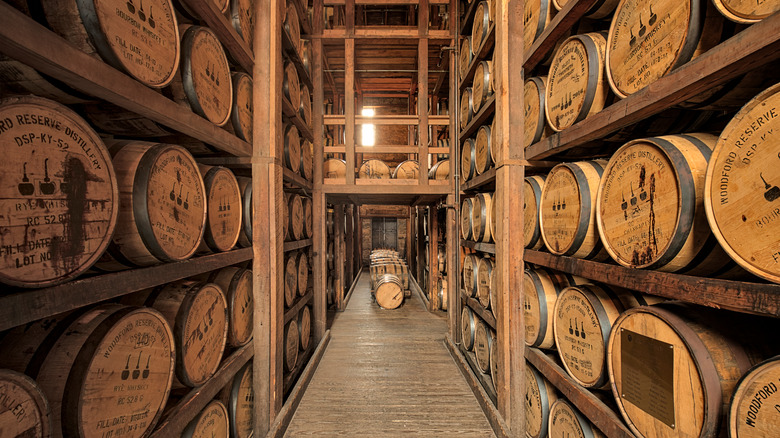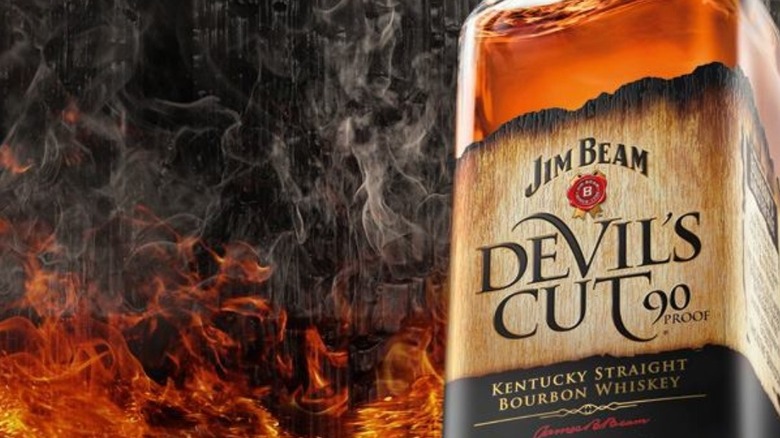What 'Devil's Cut' Means During Bourbon Processing
If you're a bourbon lover, you're undoubtedly familiar with the concept of the Angels' Share. This term refers to the bourbon that evaporates from a barrel during the aging process. For each year bourbon spends in a barrel, about 3% to 4% of its contents are lost on average. The exact amount is determined by factors, such as temperature (the hotter it is, the more quickly bourbon evaporates) and humidity.
Bourbon, by law, is aged. However, some bourbons are aged far longer than others, and thus lose a more significant amount due to evaporation. The legendary 23-year-old bourbon whiskey, Pappy Van Winkle, is expensive for a number of reasons. One of them is how much of the whiskey ends up with the angels (about 80%) compared to the paying customers.
Well, you can't have angels without devils, too — at least that was the thinking at Jim Beam, an iconic bourbon brand that created the concept of the Devil's Cut when it launched a whiskey with that name in 2011. While the Angels' Share evaporates into thin air, the Devil's Cut is absorbed into the barrel itself. For centuries — ever since Elijah Craig began using charred, new oak barrels for bourbon aging in 1789 — there has been no way to recover this lost, barrel-claimed whiskey. In 2011, however, enterprising distilling experts at Jim Beam finally discovered a method.
Why the 'Devil's Cut' is so flavorful
The Angels' Share may amount to about 3% to 4% during an average year, but there's one year where these numbers spike precipitously. This is the bourbon's initial year of barrel aging when up to 10% of its total volume is lost. Why so much this first year? Because bourbon isn't just evaporating — it's also being soaked up into barrel staves.
Jim Beam's Devil's Cut wasn't just a clever marketing idea. Barrels do absorb enough whiskey to make recovery worthwhile, but it's not the quantity of it that makes Devil's Cut special — it's the quality. That's because bourbon gets a substantial part of its flavor from the barrel in which it's stored. Not surprisingly, the whiskey absorbed directly into the staves is particularly rich in terms of its oak-based flavor compounds. Gaining access to this uniquely complex bourbon is what inspired Jim Beam to develop the process that made Devil's Cut possible.
How exactly Jim Beam removes the wood-trapped bourbon is a closely guarded secret, but Jim Beam noted when the bourbon was first released that it was done via a proprietary technique involving "agitation." This extracted whiskey is then given time to regain its balance before being added to extra-aged bourbon and bottled at 90 proof. If that sounds devilishly difficult, and it is. Many bourbon drinkers agree that it's also devilishly good.

